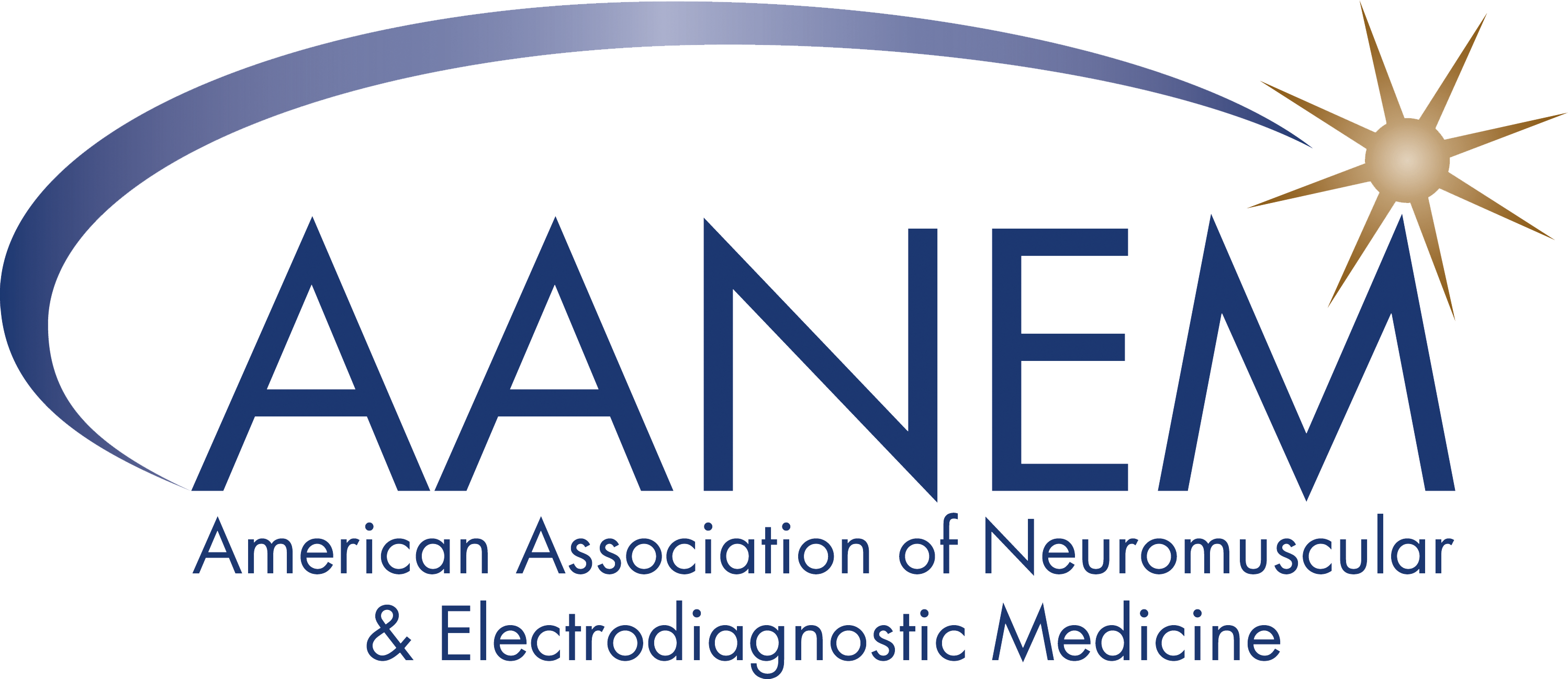Press and Media
View the latest AANEM Achievement Award winners, the American Neuromuscular Foundation (ANF) Abstract Award winners, and the latest AANEM news articles on News Express.
Frequently Asked Questions
Q: When will be content of abstracts be viewable, as opposed to just the titles?
A: The abstract content will be available at the annual meeting during the Poster Hall hours. We do not provide abstract presenter information or slides ahead of time. All available information can be found in the AANEM Abstract Guide online when it becomes available.
Q: How do I reach out to abstract or session presenters for an interview?
A: We do not offer member contact information. To connect with abstract or session presenters, review the AANEM Annual Meeting Program when available. Find the topics of interest and connect with the presenter after their lecture or during their abstract poster session time. Currently there is no interview option for virtual attendees.
Q: When can I share information?
A: The embargo on the abstracts themselves is lifted when they have been published in Muscle & Nerve and online in the AANEM Abstract Guide. However, the additional information beyond what is in the abstract itself is still embargoed.
AANEM requires information that goes beyond that which is contained within the abstract, e.g., the release of data not included in the abstract, discussion of the abstract done as part of a scientific presentation, etc. to be embargoed until the start of the annual meeting. Please see the Abstract Embargo Policy.
Q: Will the Abstract Award Reception feature the best posters?
A: The Abstract Award Reception is a social hour in honor of the abstract award winners where all authors, including award winners, will be available to discuss research.
Q: Original research is ONLY presented as posters, correct?
A: Yes - the research is presented in the Poster Hall via abstract posters.
Science News: Dry Needling in Those With Fibromyalgia
Submitted by: Oksana Sayko, MD
Edited by: Rebecca O'Bryan, MD
Citation: Dry needling in people with fibromyalgia: A randomized controlled trial of its effects on pain sensitivity and pain catastrophizing influence. J. Vicente-Mampel PT, PhD, I. J. Bautista PT, PhD, I. Salvat PT, PhD, S. Maroto-Izquierdo PhD, E. Lluch Girbés PhD, F. Ros Bernal PhD. PM&R, 2025;17:419-430.
Summary: Dry needling (DN) has been demonstrated as an effective treatment for patients with fibromyalgia (FM). From a clinical perspective, FM symptoms are associated with the phenomenon of central sensitization. The physiological effects of DN are rooted in the inhibition of active myofascial trigger points (MTrPs), which stimulate sensory afferent fibers and subsequently lead to the restoration of dysfunctional descending pain inhibitory systems.
Objective: To analyze the effects of DN in the infraspinatus muscle on both local and remote pressure pain thresholds (PPTs) and its relationship with baseline levels of pain catastrophizing in patients with FM. Psychosocial issues should also be carefully considered because, in FM, patients often present with high levels of pain catastrophizing.
Design: Randomized controlled trial.
Methods: All participants were randomly assigned to one of three interventions: DN, sham DN, and no intervention.
Hong's fast‐in and fast‐out technique was implemented during the DN intervention.
The sham DN participants received a simulated DN intervention using a sham needle (Streitberger Placebo-needles, Melbourne, Australia). The sham needle consists of a retracting needle that has previously been used in placebo-controlled trials related to DN. The sham DN procedure followed the same guidelines (ie, patient positioning, site and duration of intervention, and instructions) as those of the DN group. The needles were held for 60 seconds in a skin-like device that simulated their insertion.
PPTs were defined as the minimum amount of pressure at which the pressure sensation first changed to pain. The PPT was measured using algometers that apply controlled pressure to specific points on the body and allow individuals to indicate when pressure becomes painful. Local PPT was measured at one of the infraspinatus referred pain areas, and remote PPT at the tibial plateau of the ipsilateral leg.
Main Outcomes Measures: The primary study outcome, pain sensitivity (local and remote PPTs), was assessed at baseline, immediately post, and 24 h post intervention to evaluate short‐term effect.
Catastrophizing levels were assessed using the Spanish version of the Pain Catastrophizing Scale (PCS). Patients: Participants were a total of 120 women diagnosed with FM. However, during the follow‐up period, 24 participants discontinued their involvement (withdrew during follow-up), leaving a final cohort of 96 patients who successfully concluded the study.
Results: DN showed significant differences in both local PPTs immediately post intervention and 24 hours post intervention (MD [95% confidence interval] = 3.21 [0.40–6.02] kg/cm2, p = .019; and 2.84 [0.10–5.58] kg/cm2, p = .039, respectively) compared to sham and no‐intervention groups. In addition, DN group results suggest that moderate values of catastrophizing (<35) diminish the effect of DN immediately postintervention.
Conclusions: The infraspinatus DN led to a notable reduction in local PPTs among individuals with FM. Additionally, the effectiveness of the DN treatment was influenced by pain catastrophizing.
